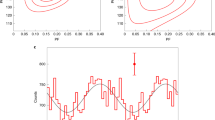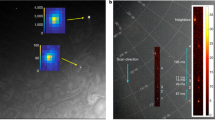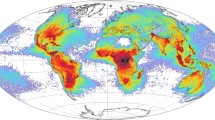Abstract
A BALLOON-BORNE omnidirectional scintillation detector was aloft over Palestine, Texas (L value about 1.6), during the solar approach of the Ikeya-Seki comet on October 20, 1965. One of the aims of this experiment was to observe any possible enhancements to the low-energy atmospheric photon flux induced by the passage of the comet. The perihelion of the comet occurred on the ‘dark’ side of the Sun with an orbital inclination of about 40° to the ecliptic and therefore had an apparent perihelion of about 1° around the Sun as observed from the surface of the Earth.
This is a preview of subscription content, access via your institution
Access options
Subscribe to this journal
Receive 51 print issues and online access
$199.00 per year
only $3.90 per issue
Buy this article
- Purchase on Springer Link
- Instant access to full article PDF
Prices may be subject to local taxes which are calculated during checkout
Similar content being viewed by others
References
Peterson, L. E., J. Geophys. Res., 68, 979 (1963).
Vette, J. I., J. Geophys. Res., 67, 1731, (1962).
Northrop, J. A., and Hostetler, R. L., Bull. Amer. Phys. Soc., 6, 52 (1961).
Anderson, K. A., Phys. Rev., 123, 1435 (1961).
Author information
Authors and Affiliations
Rights and permissions
About this article
Cite this article
GRONSTAL, P., BUKATA, R. Observations of the Low-energy Photon Fluxes during the Solar Approach of the Ikeya-Seki Comet. Nature 211, 176–177 (1966). https://doi.org/10.1038/211176b0
Issue Date:
DOI: https://doi.org/10.1038/211176b0
Comments
By submitting a comment you agree to abide by our Terms and Community Guidelines. If you find something abusive or that does not comply with our terms or guidelines please flag it as inappropriate.



